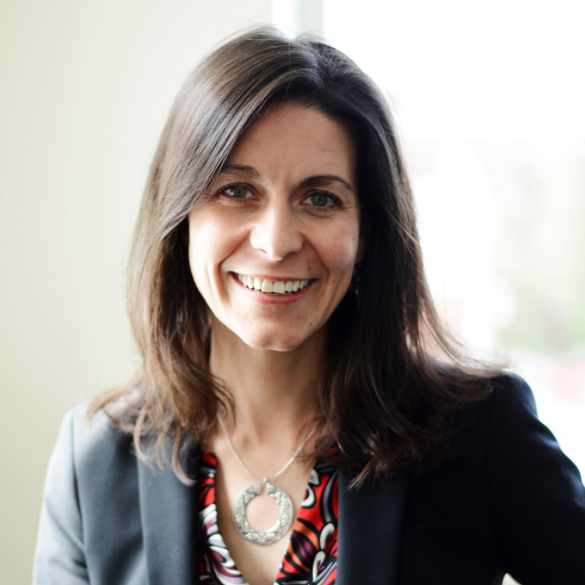With contributions from Dr. Jennifer Fernandez.
The “&” in our name is essential to who we are – we train therapists in our counseling psychology program, but through a distinctively theological lens. We offer programs in Divinity and Culture & Theology, but with attention to the psychological. Our distinctiveness is, in part, a result of our commitment to keep the fields of theology, biblical studies, and psychology in conversation.
What is Interdisciplinary Learning?
In order to understand interdisciplinary learning, we have to understand what we mean by disciplines – that is, the academic disciplines. It’s easy to think about disciplines as static institutions, but academic disciplines themselves are far from monolithic and unified.
Disciplines are complex, multi-layered, and dynamic. Most important, they are made up of people: scholars investigating questions, teaching students, contributing to knowledge, and advancing their fields. A more helpful way of thinking about disciplines is to think about them as communities with a set of shared (but sometimes contested) questions, objects of study, practices, epistemologies, methodologies, and vocabularies. 1
Interdisciplinary learning first involves adopting what Rebecca Nowacek calls “meta-disciplinary awareness” 2 – that is, an ability to see the disciplines as disciplines, examining their assumptions and biases and frameworks, and paying attention to what the disciplines help us see and what they might not. The metaphor I like to use is that of a pair of glasses: if the disciplines are a pair of glasses you might put on to examine an object of study or a question, then metadisciplinary awareness asks us to pay attention to the glasses themselves: What are they made of? How do they “work?” How were they formed, or how did they come to be the way they are? What do they help us see, and what might they obscure?
Interdisciplinary learning, then, recognizes that most of the interesting problems in the world are complex enough that a single perspective isn’t enough to help us fully see and understand them. We need many voices, and many perspectives, to get a full picture of a person, a phenomenon, an idea, or a problem.
Interdisciplinarity is collaborative at its core, recognizing that one perspective is insufficient for fully understanding a situation; we see and understand better when we work together. Interdisciplinary learning is more than just studying multiple academic disciplines side by side–that would be Multidisciplinarity learning, the side by side use of disciplinary understandings without integration. The key to bringing various disciplines together in Interdisciplinarity is integration.
Metaphors can prove useful in understanding what makes Interdisciplinary learning different from other kinds of frameworks. A bowl of fruit could be helpful to think of when thinking about multidisciplinarity. There, each individual fruit sits on its own — peaches are discernable as peaches, bananas as bananas. But Interdisciplinary integration is a lot like a smoothie — fruits come together to create something new, a blended creation where each distinctive fruit is harder to discern. Instead what you have is a delicious, cohesive mixture. Another metaphor we can use is that of a bridge. Interdisciplinarity can be bridge building in the sense that a bridge connects two points (in this case knowledge from two or more disciplines) that would otherwise remain separate.
Why is Interdisciplinary Learning Important at The Seattle School of Theology & Psychology?
The challenges we face in our world are complex and multifaceted. We are complex and multifaceted, and we are understanding that reality more and more deeply as we walk about our neighborhoods, engage in relationships, and participate in our local and global communities. The world needs leaders, thinkers, pastors, artists, and therapists who can approach their work in multifaceted and complex ways. At The Seattle School of Theology & Psychology, we embrace this approach in our name, in our programs, and in our curriculum.
Interdisciplinary learning at The Seattle School means that our faculty have deep expertise in their own fields, but also dexterity in conversations with experts in other fields. Our faculty work together on curriculum and committees, teach together, and even share offices across disciplinary boundaries. What results are generative conversations, consideration of multiple viewpoints and perspectives, and innovative collaboration and curiosity.
Interdisciplinary learning at The Seattle School means that students choose a degree program that meets their vocational needs, but programs are complemented by coursework in the other programs, including a Common Curriculum that invites students to move between the fields of theology and psychology.
Our curriculum offers opportunities for encounter, translation, and integration. Interdisciplinary Learning at The Seattle School encompasses all of these things at different points along the journey. Sometimes that means that students might encounter disciplinary questions, ideas, or ways of thinking that help them see the world from a different vantage point. Other times this means that students may find themselves translating what happens across various courses into new language as they make sense of the theological and psychological ways of engaging the world.
Ultimately, we hope the aim is integration, that as our students encounter coursework in the various disciplines, they begin to develop a critical understanding of what each discipline affords and constrains. That is, what it allows us to see and do, as well as its limitations. It is a way of weaving together a multifaceted way of engaging one’s vocation that draws from the theological and the psychological.
“Given the complexity of today’s world, we need thinkers and do-ers who understand that complexity. The Interdisciplinary approach offered at The Seattle School prepares students to create holistic solutions by weaving together disciplinary insights as well as both contextual and systemic thinking. As students explore text, soul, and culture, through various methodological frameworks, they come to see their own work as integral to the multi-dimensional fabric of social transformation.” Dr. Jennifer Fernandez
Resources
- Thaiss, Chris J., & Zawacki, Terry Myer. (2006). Engaged writers and dynamic disciplines: Research on the academic writing life.
- Nowacek, Rebecca. (2007).Toward a Theory of Interdisciplinary Connections: A Classroom Study of Talk and Text. Research in the Teaching of English, 41.4, pp. 368-401.


